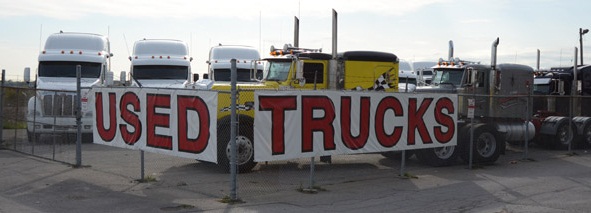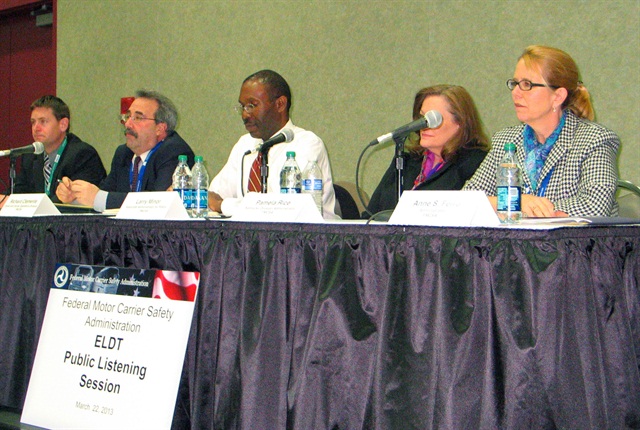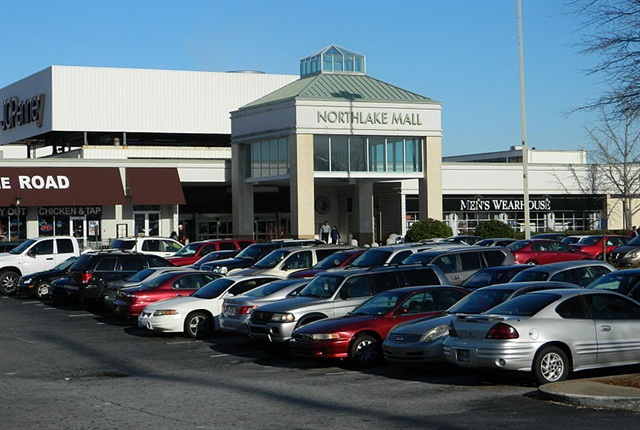-
28
Mar
Add Exhaust-Emissions Gear to a Used-Truck Inspection

Is it time to replace your old truck or tractor? Is it old enough that its engine has none of the exhaust-emissions equipment that’s been giving people fits in recent years? Have you decided to take the plunge anyway because your vehicle is just plain worn out?
Read more -
25
Mar
CDL Schools Say Proposed Training Standards Would Make Driver Shortage Worse

LOUISVILLE — In a Friday “listening session” the Federal Motor Carrier Safety Administration hosted regarding its proposed entry-level driver training stories, truck driver training school officials warned that the proposal would make the current driver shortage even worse.
As FMCSA Administrator Anne Ferro explained during opening remarks in the Friday afternoon session at the Mid-America Trucking Show, the agency has been working on this for more than two decades. Back in 1991 Congress ordered safety regulators to start work on a training rule. A 2004 rule requires new drivers to know basic information about the job, over and above the skills they need to pass the CDL exam.
Advocates for Highway Safety sued, saying that the lack of a requirement for road training is a fatal flaw in the rule. The court agreed and forced the agency to take another look. That led to a 2007 proposed rule that would require anyone applying for a new or updated CDL to graduate from an accredited program that includes road training as well as class training.
Read more -
07
Mar
TCA fleet panel says driver shortage will intensify with HOS changes
 On Tuesday, March 5, an executive panel representing three large carriers gave their take on the economy, changes in regulations and the impact to their businesses at the Truckload Carriers Association’s annual convention in Las Vegas.Read more
On Tuesday, March 5, an executive panel representing three large carriers gave their take on the economy, changes in regulations and the impact to their businesses at the Truckload Carriers Association’s annual convention in Las Vegas.Read moreThe panel, moderated by Lana Batts, co-president of Driver iQ, said freight volumes receded in the latter half of 2012 and have since picked up. The driver shortage has intensified, however, and likely will grow worse this summer when changes to the hours of service (HOS) rules take effect.
-
28
Feb
New Reports Show Bright Spots In The Economy
 While trucking and the rest of the nation are nervous about the increasing likelihood of federal budget sequestration and its effect on the economy, some of the first numbers out show the year has started off better than expected.
While trucking and the rest of the nation are nervous about the increasing likelihood of federal budget sequestration and its effect on the economy, some of the first numbers out show the year has started off better than expected.The private group The Conference Board said Tuesday that its Consumer Confidence Index for February showed the first hike in four months. The 69.6 reading is up dramatically from the previous month’s level and is higher than a consensus poll of economists were forecasting. The Board’s Present Situation Index and The Expectations Index both also reported increases from January.
Read more -
27
Feb
2nd major snowstorm paralyzes parts of Midwest; even 18-wheelers get stuck
Read moreKANSAS CITY, Mo. — For the second time in a week, a major winter storm paralyzed parts of the nation’s midsection Tuesday, dumping a fresh layer of heavy, wet snow atop cities still choked with piles from the previous system and making travel perilous from the Oklahoma panhandle to the Great Lakes.